 There have been two significant changes in prices for travel in Bristol. At the end of April, the toll on Brunel’s iconic Clifton Suspension Bridge doubled from 50p to £1 for a single crossing by car. The bridge over the Avon Gorge links North Somerset with the Clifton area of Bristol and is a major access route to the north west of the city. Avoiding the bridge could add around 2 miles or 8 minutes to a journey from North Somerset to Clifton.
There have been two significant changes in prices for travel in Bristol. At the end of April, the toll on Brunel’s iconic Clifton Suspension Bridge doubled from 50p to £1 for a single crossing by car. The bridge over the Avon Gorge links North Somerset with the Clifton area of Bristol and is a major access route to the north west of the city. Avoiding the bridge could add around 2 miles or 8 minutes to a journey from North Somerset to Clifton.
The justification given by the Clifton Suspension Bridge Trust for the increase was that extra revenue was needed for maintenance and repair. As Trust Chairman Chris Booy said, ‘The higher toll will enable the Trust to continue its £9 million 10-year vital repair and maintenance programme which aims to secure the bridge’s long-term future as a key traffic route, one of Bristol’s major tourist destinations and the icon of the city’.
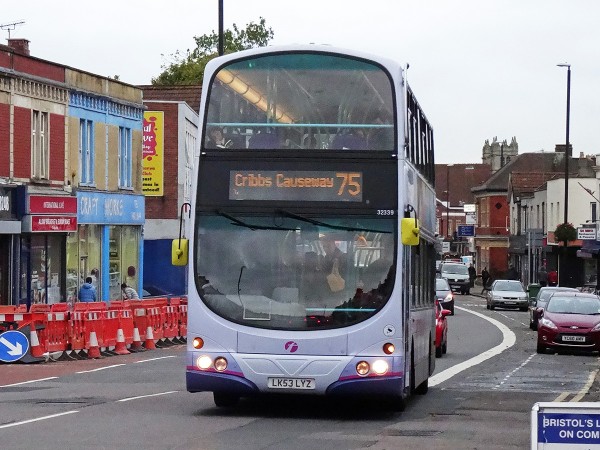 The other price change has been downwards. In November 2013, the First Group cut bus fares in Bristol and surrounding areas. Single fares for up to three miles were cut from £2.90 to £1.50; 30% discounts were introduced for those aged 16 to 21; half-price tickets were introduced for children from 5 to 15; and the two fare zones for £4 and £6 day tickets were substantially increased in size.
The other price change has been downwards. In November 2013, the First Group cut bus fares in Bristol and surrounding areas. Single fares for up to three miles were cut from £2.90 to £1.50; 30% discounts were introduced for those aged 16 to 21; half-price tickets were introduced for children from 5 to 15; and the two fare zones for £4 and £6 day tickets were substantially increased in size.
First hoped that the anticipated increase in passengers would lead to an increase in revenue. Evidence so far is that passenger numbers have increased, with journeys rising by some 15%. Part of this is due to other factors, such as extra bus services, new buses, free wifi and refurbished bus stops with larger shelters and seats. But the company attributes a 9% rise in passengers to the fare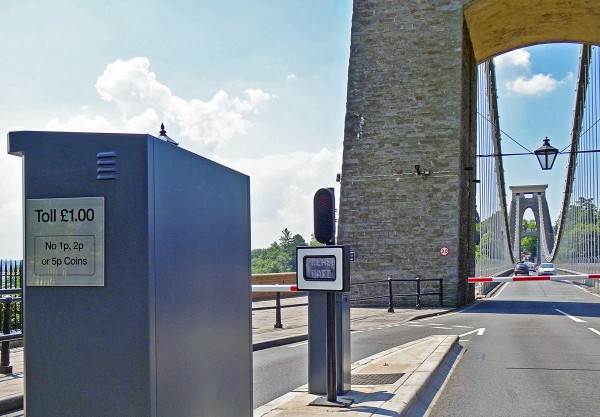 reductions. As far as revenue is concerned, indications from the company are that, after an initial fall, revenue has risen back to levels earned before the fare reduction.
reductions. As far as revenue is concerned, indications from the company are that, after an initial fall, revenue has risen back to levels earned before the fare reduction.
What are the longer-term implications for revenue and profit of these two decisions? This depends on the price elasticity of demand and on changes in costs. Read the articles and then consider the implications by having a go at answering the questions.
Clifton Suspension Bridge toll to rise from 50p to £1 BBC News (9/4/14)
Regular Users of Clifton Suspension Bridge will be Protected from the Increase in the Bridge Toll Clifton Suspension Bridge (9/4/14)
Clifton Suspension Bridge Review Decision Letter Department of Transport (24/3/14)
Clifton Suspension Bridge Trust: bridge toll review inspector’s report Department of Transport (8/4/14)
Clifton Suspension Bridge Toll Increase – Account of the May 2013 Public Inquiry The National Alliance Against Tolls (NAAT)
First Bus Bristol fare cuts sees passenger growth BBC News (6/6/14)
First gamble over cheaper bus fares pays off as passengers increase in Bristol The Bristol Post (6/6/14)
Bristol bus fares deal to extend to South Gloucestershire and North Somerset The Bristol Post, Gavin Thompson (12/6/14)
Questions
- What assumptions is the Clifton Suspension Bridge Trust making about the price elasticity of demand for bridge crossings?
- What determines the price elasticity for bridge crossings in general? Why is this likely to differ from one bridge to another?
- How is the long-term price elasticity of demand likely to differ from the short-term elasticity for Clifton Suspension Bridge crossings and what implications will this have for revenues, costs and profit?
- How is the price elasticity of demand for the bridge likely to vary from one user to another?
- How is offering substantial price reductions for multiple-crossing cards likely to affect revenue?
- What determines the price elasticity of demand for bus travel?
- What could a local council do to encourage people to use buses?
- How is the long-term price elasticity of demand for bus travel likely to differ from the short-term elasticity?
- In the long run, is First likely to see profits increase from its fare reduction policy? Explain what will determine this likelihood.
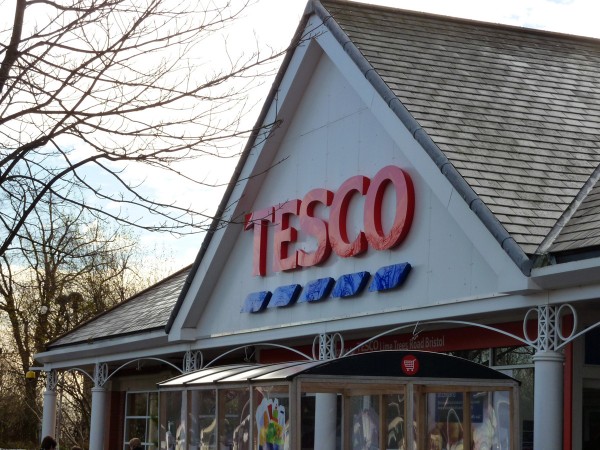 Oligopoly is the most complex market structure, characterised by a few large firms which dominate the industry. Typically there are high barriers to entry and prices can be very sticky. However, perhaps the most important characteristic is interdependence. With this feature of the market, oligopolies, despite being dominated by a few big firms, can be the most competitive market structure.
Oligopoly is the most complex market structure, characterised by a few large firms which dominate the industry. Typically there are high barriers to entry and prices can be very sticky. However, perhaps the most important characteristic is interdependence. With this feature of the market, oligopolies, despite being dominated by a few big firms, can be the most competitive market structure.
There are many examples of oligopolies and one of the best is the supermarket industry. Dominated by the likes of Tesco, Morrisons and Asda, competition in terms of branding, product development and quality is constant, but so is price competition. 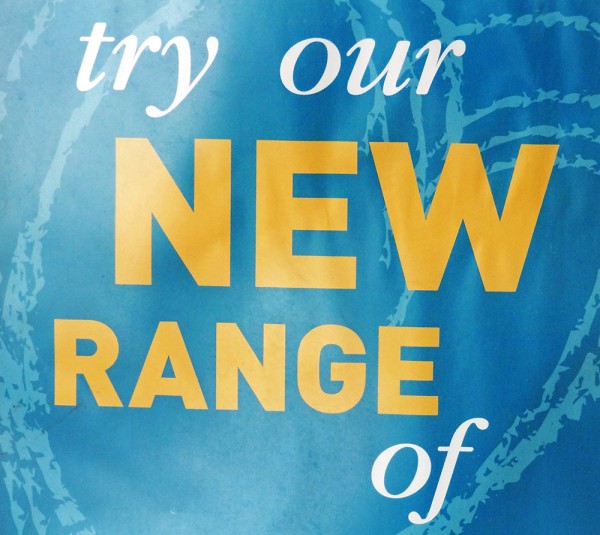 During the recession, you could hardly watch a TV programme that included advert breaks without seeing one of the big four advertising their low prices.
During the recession, you could hardly watch a TV programme that included advert breaks without seeing one of the big four advertising their low prices.
However, in the past few years, the supermarket industry has seen competition grow even further and the big four are now facing competition from low-cost retailers, including Aldi and Lidl. This has led to falling sales and profits for the likes of Tesco and Morrisons.
 Tesco, Morrisons, Sainsbury’s and Asda have all felt the emergence of discount retailers and have seen their customer numbers fall. All have reacted with rounds of price cuts and new deals, and this price war looks set to continue. Morrisons have just announced a 14% average price cut on 135 products to match earlier changes in pricing strategies by the other main competitors. As I’m writing this during the Algeria v. South Korea match, I have just seen an advert from Sainsbury’s, promoting their milk chocolate digestive biscuits, priced at £1. The advert explicitly states that they are ‘less than Morrisons’, where the price is £1.50. This was soon followed by another from Sainsbury’s saying that
Tesco, Morrisons, Sainsbury’s and Asda have all felt the emergence of discount retailers and have seen their customer numbers fall. All have reacted with rounds of price cuts and new deals, and this price war looks set to continue. Morrisons have just announced a 14% average price cut on 135 products to match earlier changes in pricing strategies by the other main competitors. As I’m writing this during the Algeria v. South Korea match, I have just seen an advert from Sainsbury’s, promoting their milk chocolate digestive biscuits, priced at £1. The advert explicitly states that they are ‘less than Morrisons’, where the price is £1.50. This was soon followed by another from Sainsbury’s saying that  the Cif bathroom spray is £1.50, which is ‘less than Tesco’, priced at £2.75. I need say no more.
the Cif bathroom spray is £1.50, which is ‘less than Tesco’, priced at £2.75. I need say no more.
So, what is it about this industry which means it is so susceptible to price wars? Are all oligopolies like this? The following articles consider the supermarket industry and the price wars that have emerged. Think about this sector in terms of oligopoly power and consider the questions that follow.
Morrisons announces another round of price cuts/a> BBC News (22/6/14)
Tesco suffers worst sales for decades The Guardian, Sarah Butler and Sean Farrell (4/6/14)
Britain’s Morrisons to cut prices on 135 products Reuters (22/6/14)
Morrisons slashes more prices by up to 41pct The Telegraph, Scott Campbell (22/6/14)
Sainsbury’s and Netto in discount store tie-up BBC News (20/6/14)
Slow to respond, Tesco now pays the price Wall Street Journal, Peter Evans and Ese Erheriene (19/6/14)
One million fewer customer visits a week at Tesco The Guardian, Sean Farrell (3/6/14)
Asda only one of big four to grow share as Lidl achieves highest ever growth Retail Week, Nicola Harrison (3/6/14)
Will Asda shoot itself in the foot with in-store cost cutting? The Grocer, Alec Mattinson (28/5/14)
Tesco sales slide at record speed as discounters pile on the pressure Independent, Simon Neville (3/6/14)
Quester: Back J Sainsbury to prove doubters wrong The Telegraph, Graham Ruddick (11/6/14)
Questions
- What are the key characteristics of an oligopoly?
- How do the above characteristics explain the conduct of firms in an oligopoly? How relevant is this to the supermarket industry?
- In many oligopolies, prices are sticky. Why is it that in the supermarket industry price wars break out?
- Is the kinked demand curve a relevant model to use when talking about the supermarket industry?
- What other industries fit into the category of an oligopoly? Is the kinked demand curve model relevant in these industries?
- Would there be an incentive for the big 4 supermarkets to collude and fix price? Explain your answer.
- Interdependence is the key characteristic in an oligopoly. Can this explain the behaviour of the supermarkets?
- Given that oligopolies are characterised by high barriers to entry, how is that Aldi and Lidl have been able to compete with them?
 What does it take to create a successful business? From the looks of it: mud, electric barbed wire, icy water, enormous walls to climb, big jumps to make, team work and complete exhaustion – the recipe for every successful business.
What does it take to create a successful business? From the looks of it: mud, electric barbed wire, icy water, enormous walls to climb, big jumps to make, team work and complete exhaustion – the recipe for every successful business.
Tough Mudder was founded in 2010 and runs gruelling extreme obstacle courses for anyone mad enough to think it might be fun. In the BBC News article below, you’ll see that there is a discussion as to intellectual property rights, but whatever the outcome, this company has become the main provider of such extreme sports in a remarkably short period of time. Within 2 years of being established, it had gained 500,000 participants and now records annual revenues of more than £60m. Add to this, that there has no external funding and this organic growth is beyond impressive.
A key question, then, is what creates such a successful business? Without a doubt, this depends on the product you are selling and the market a firm is in, but there are some aspects that apply across the board. Understanding what your customers want is crucial, as they represent your demand. Differentiating your product to create inelastic demand may be a good strategy to enable price rises, without losing a large number of sales, but the differentiated product is essential in establishing demand, loyalty and reputation. Marketing something in the right way and to the right audience is crucial – word-of-mouth is often the most effective form of advertising.
If you have all of these aspects, then you have the makings of a successful business. The next step is putting it into practice and climbing those high walls, taking the big jumps and hopefully avoiding the mud and ice. The following article considers Will Dean and his fast growing business.
Will Dean: ‘The Mark Zuckerberg of extreme sports’ BBC News, Will Smale (9/6/14)
Questions
- If you were starting up a business, how might you go about finding out if there is a demand for your product?
- Why is product differentiation a key aspect of a successful business? Using a diagram, explain how this might help a firm increase revenue and profits.
- What forms of marketing might be used in persuading customers to buy your product?
- In the case of Tough Mudder, which aspects have proved the most important in creating such a successful business?
- Are there any barriers to the entry of new firms in this sector? If so, what are they are how important are they in allowing Tough Mudder to retain a monopoly position?
- Which factors should be considered by a company when it is thinking of global expansion?
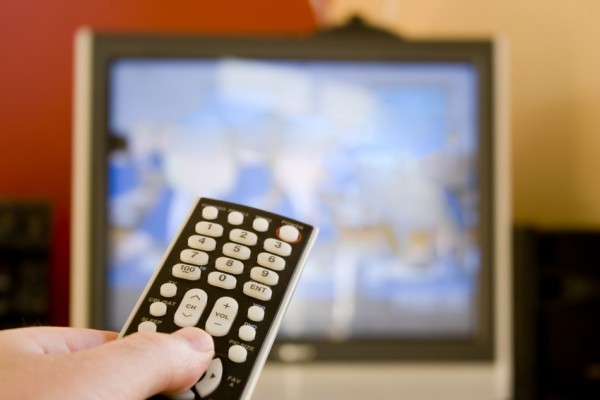 Some eyebrows were raised when the English Premier League (EPL) recently published the final payments to each of the clubs from the revenue generated by the latest TV deal. The headlines were that Liverpool received the highest individual pay-out of £97,544,336! Cardiff City received the lowest pay-out of £62,082,302. What caught the eye of the headline writers was that the revenue from the lowest pay-out this season (the payment to Cardiff) was greater than the highest pay-out from the previous season (a payment of £60,813,999 to Manchester United).
Some eyebrows were raised when the English Premier League (EPL) recently published the final payments to each of the clubs from the revenue generated by the latest TV deal. The headlines were that Liverpool received the highest individual pay-out of £97,544,336! Cardiff City received the lowest pay-out of £62,082,302. What caught the eye of the headline writers was that the revenue from the lowest pay-out this season (the payment to Cardiff) was greater than the highest pay-out from the previous season (a payment of £60,813,999 to Manchester United).
The 2013-14 season was the first year of the latest 3 year deal for the rights to broadcast EPL games on the television, internet and radio. As part of this deal BSkyB are paying £760 million each year for the rights to broadcast 116 EPL games per season in the UK. BTSport are paying £246 million per year for the rights to broadcast 38 EPL games per season. In addition to selling the rights to broadcast games in the UK, the EPL also separately sells the rights to broadcast games in other countries. For example Cable Thai Holdings paid £205 million for a 3 year deal to show EPL matches in Thailand while NowTV paid £128 million for a similar deal in Hong Kong. In total the EPL earns approximately £1.8 billion per season from the sale of their domestic and international media rights.
The approach taken by the EPL to manage the sale of the broadcasting rights has raised considerable debate amongst economists and policy makers. There are two very different methods that can be used by teams in a league to sell the rights. They are the Individual Sales Model (ISM) and the Collective Sales Model (CSM). In the ISM each club is responsible for marketing and selling the rights to broadcast its home games. The ISM is currently employed by both La Liga in Spain and Primeira Liga in Portugal. In the CSM the rights are sold jointly by the league, federation or national association on behalf of the teams involved. This CSM is currently used by the majority of the football leagues in Europe. The EPL sold the rights for 2013-16 on behalf of the 20 clubs using a sealed bid auction.
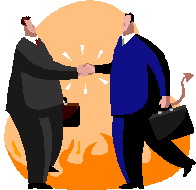 Some economists and policy makers have criticised the CSM, claiming that it is an example of a cartel that simply restricts output and leads to higher prices. Each club is considered to be the equivalent of a firm in a traditional industry. The argument is based on a number of observations about the teams. They:
Some economists and policy makers have criticised the CSM, claiming that it is an example of a cartel that simply restricts output and leads to higher prices. Each club is considered to be the equivalent of a firm in a traditional industry. The argument is based on a number of observations about the teams. They:
• are each separately owned and submit their own individual set of accounts
• compete with each other to buy inputs (i.e. the players) to produce an output (i.e. a match)
• individually market and set the price for the outputs they produce i.e. the ticket for the games and the prices of the merchandise such as football shirts
If this view of the industry is taken, the league or federation looks rather like a restrictive agreement between independent competitors that creates monopoly market power. As evidence to support this interpretation of the CSM, reference is often made to the details of the contract between the EPL and BSkyB and BTSport. As part of this agreement the number of live matches that can be broadcast is restricted to 154.This represents just over 40% of the maximum total of 380 that could be shown. Teams are effectively prohibited from individually selling the rights to matches that are not selected for broadcast in the collective deal as they must seek permission from the EPL. Over ten years ago the Director General of the Office of Fair Trading commented that:
Within the market the Premier League has a major if not unique position. By selling rights collectively…it is acting as a cartel. The net effect of cartels is to inflate costs and prices. Any other business acting in this way would be subject to competition law and I see no reason why the selling of sport should be treated differently.
The EPL has always defended it actions by claiming that any increase in the number of televised games would have a negative impact on the attendance at matches.
An alternative view focuses on the peculiar or unique characteristics of sports leagues. In particular it is argued that sport is unusual because the level of co-operation required between the teams and a league to produce matches is far greater than that required by firms in other industries to produce output. Agreements have to be made about issues such as the timing and venue of the games as well as the rules under which they will be played. However unlike a traditional cartel arrangement these agreements do not simply control and restrict output. They also improve the entertainment value of the game and hence the quality of the product. Some authors have argued that because of these unique characteristics, the league rather than the individual team should be considered as the equivalent to a firm in a more traditional industry. In this ‘single entity theory’ teams are viewed as divisions of a single organization i.e. the league. The league is treated as a natural monopoly that legally owns the broadcast rights of the clubs rather than a cartel of separate firms. Others have argued that it is more sensible to think of the league as a joint venture between the teams.
Not only are the levels of co-operation required much greater than in traditional industries but it is also argued that competitive balance is important for a successful league. If the same teams always win most of the games then there are concerns that fans will find this boring and it will reduce their willingness to pay to watch matches in either the stadium or on television. It is argued that the CSM makes it easier to distribute the TV money more equally and so helps to maintain competitive balance in a league. The White Paper on Sport published by the European Union in 2007 stated that:
Collective selling can be important for the redistribution of income and can thus be a tool for achieving greater solidarity within sports.
The debate continues about whether the CSM used by the EPL is an example of a restrictive cartel which acts against the public interest or a business practice that helps to improve the quality of the product for the customer.
Premier League clubs earn record-breaking sums thanks to TV bonanza The Telegraph (14/5/14)
Liverpool top earners over season with £99m – and bottom side Cardiff got £64m (so see what your team received in 2013-14 Mail Online (11/5/14)
Cardiff earn more TV cash than champions Man Utd did in 2013 BBC Sport (14/5/14)
Relegated Cardiff Earn More TV Revenue than Man Utd Tribal Football (14/5/14)
TV Bonanza for Premier League Clubs Pars Herald (18/5/14)
Season of woe hits home in money league Express & Star (15/5/14) .
Questions
- What is a natural monopoly? Draw a diagram to illustrate your answer.
- What is a cartel? Find three real-world examples of cartel agreements.
- It was explained in the article how the EPL sells the rights to broadcast just over 40% of the total number of matches played per season. Draw a diagram to illustrate and explain how this might be an example of a cartel agreement that restricts output and results in higher prices.
- The EPL defends its decision to restrict the number of games that can be televised in its domestic deal by claiming that any increase would have a negative impact on attendance at the matches. To what extent do you think that watching a live game on the television is a substitute for watching it in the stadium? Draw a demand and supply diagram to illustrate a situation where they are strong substitutes. Explain how the concept of cross price elasticity could be applied to this example.
- Outline how a sealed bid auction works. What are the advantages of using a sealed bid auction as opposed to other types of auction.
- Can you think of any other economics arguments that could be used to defend the use of the CSM for the sale of the broadcast rights?
 When you think about John Lewis, you think of a large department store. It is a department store celebrating its 150th anniversary. Many large retailers, such as John Lewis, have expanded their product range throughout their history and have grown organically, moving into larger and more prominent locations. What’s the latest location? St Pancras station.
When you think about John Lewis, you think of a large department store. It is a department store celebrating its 150th anniversary. Many large retailers, such as John Lewis, have expanded their product range throughout their history and have grown organically, moving into larger and more prominent locations. What’s the latest location? St Pancras station.
The idea of a click-and-collect store has grown in popularity over the past decade. With more and more people working and leading very busy lives, together with the growth of online shopping, it is the convenience of this type of purchase which has led to many retailers developing click-and-collect. Indeed, for John Lewis, 33% of its internet sales do come through click-and-collect. However, John Lewis is going a step further and its new strategy is reminiscent of companies like Tesco. If you just need to pop into Tesco to get some milk, you’re likely to go to the local Tesco express. The first mover advantage of Tesco in this market was vital.

John Lewis is unusual in that it is owned by its employees and this ownership structure has proved successful. Despite a long history, John Lewis has moved with the times and this latest strategy is further evidence of that. In today’s world, convenience is everything and that is one of the key reasons behind its new St Pancras convenience store. It will allow customers to purchase items and then collect them on their way to and from work – click-and-commute, but it will also provide customers with an easily accessible place to buy electronic equipment and a range of household goods. The retail director, Andrew Murphy said:
In the battleground of convenience, we are announcing a new way for commuters to shop with us … Customers spend a huge amount of time commuting, and our research shows that making life easier and shopping more convenient is their top priority.
This appears to be the first of many smaller convenience stores, enabling John Lewis to gain a presence in seemingly impossible places, given the normal size of such Department stores. For many people, commuting to and from work often involves waiting at transport hubs – one of the big downsides to not driving. So it seems sensible for such an established retailer to take advantage of commuters waiting for their train or plane to arrive, who have time to kill. The following articles consider this new direction for an old retailer.
John Lewis to open St Pancras convenience store BBC News (2/5/14)
John Lewis thinks small with convenience store The Guardian, Zoe Wood (2/5/14)
John Lewis to trial convenience store click-and-collect format at St Pancras Retail Week, Ben Cooper (2/5/14)
 Why is click and collect proving so popular? BBC News, Phil Dorrell (2/5/14)
Why is click and collect proving so popular? BBC News, Phil Dorrell (2/5/14)
 The rise of click and collect for online shoppers BBC News, Phil Dorrell (2/5/14)
The rise of click and collect for online shoppers BBC News, Phil Dorrell (2/5/14)
Questions
- What are the advantages and disadvantages of the organisational and ownership structure of John Lewis?
- How would you classify this new strategy?
- How do you think this new strategy will benefit John Lewis in terms of its market share, revenue and profit?
- Is it likely that John Lewis will be able to target new customers with this new convenience store strategy?
- How important is a first-mover advantage when it comes to retail? Using game theory, can you create a game whereby there is clear first mover advantage to John Lewis?
 There have been two significant changes in prices for travel in Bristol. At the end of April, the toll on Brunel’s iconic Clifton Suspension Bridge doubled from 50p to £1 for a single crossing by car. The bridge over the Avon Gorge links North Somerset with the Clifton area of Bristol and is a major access route to the north west of the city. Avoiding the bridge could add around 2 miles or 8 minutes to a journey from North Somerset to Clifton.
There have been two significant changes in prices for travel in Bristol. At the end of April, the toll on Brunel’s iconic Clifton Suspension Bridge doubled from 50p to £1 for a single crossing by car. The bridge over the Avon Gorge links North Somerset with the Clifton area of Bristol and is a major access route to the north west of the city. Avoiding the bridge could add around 2 miles or 8 minutes to a journey from North Somerset to Clifton. The other price change has been downwards. In November 2013, the First Group cut bus fares in Bristol and surrounding areas. Single fares for up to three miles were cut from £2.90 to £1.50; 30% discounts were introduced for those aged 16 to 21; half-price tickets were introduced for children from 5 to 15; and the two fare zones for £4 and £6 day tickets were substantially increased in size.
The other price change has been downwards. In November 2013, the First Group cut bus fares in Bristol and surrounding areas. Single fares for up to three miles were cut from £2.90 to £1.50; 30% discounts were introduced for those aged 16 to 21; half-price tickets were introduced for children from 5 to 15; and the two fare zones for £4 and £6 day tickets were substantially increased in size. reductions. As far as revenue is concerned, indications from the company are that, after an initial fall, revenue has risen back to levels earned before the fare reduction.
reductions. As far as revenue is concerned, indications from the company are that, after an initial fall, revenue has risen back to levels earned before the fare reduction.








